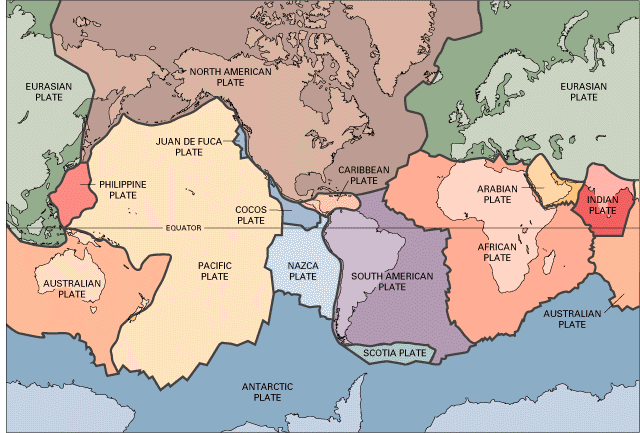An Introduction to Structural Geology and Tectonics
|
An Introduction to Structural Geology and Tectonics |
14. Whole Earth Structure and Plate Tectonics
Study of the origin and evolution of large regions of the Earth's upper layers is the subject of tectonics, and this chapter begins a part of the book where we focus on regional geology and tectonics. Structural studies are used in tectonic analysis to provide information about the conditions during regional deformation. Likewise, structural geologists explore the tectonic framework in which deformation occurred because they want to know why the structures they've been studying formed in the first place! The speculations that characterize tectonic debates can be good fun, but be forewarned that the conclusions of such debates are sometimes not well constrained!

Whatever you get out of tectonic analysis, you will probably agree that it presents some of the most amazing views of our evolving Earth. The origin of the continents, the building of mountain belts, the formation of ocean floor and movement of plates are only a few of the many topics that are addressed in tectonics. Before we can discuss how and why the upper layers of the Earth were, and continue to be mobile, we must first have a sense of what we are working with. So, we need to answer two fundamental questions. First, what are the entities that move and deform? To answer this question, we briefly review information about the internal structure of the Earth. Second, how do the outer layers of the Earth move? To answer this question, we examine the basic tenets of plate tectonics theory.
Links
This
Dynamic Earth - The Story of Plate Tectonics